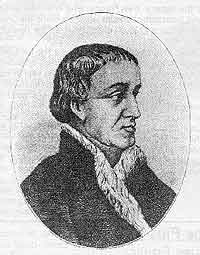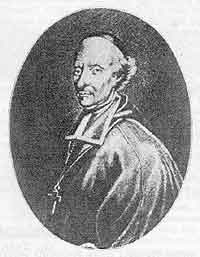|
|
Monsieur de La Dauversière gave the command of the colony to Paul Chomedey de Maisonneuve, a young officer of lesser nobility, known for his piety and leadership qualities. Maisonneuve had served his king in several battles in Europe. He had lived a pious life in the military camps, which were not, then as now, known for their morality. Maisonneuve lived in the manner of a consecrated lay person. His exemplary life, and his saintly reputation can perhaps make him a candidate for beatification. Be that as it may, he was a man of great character. When the governor of Québec, Monsieur de Montmagny, tried to have him abandon the idea of a settlement in Montréal, because of the Iroquois threat, he replied dryly: "I didn't come here to discuss the situation, but to carry out my orders. Should all the trees of Montréal turn into Iroquois, it is my duty on my honour to set up a colony." Maisonneuve was not the type to refuse an order coming from Heaven under the pretext of human caution. Our Lord wanted a colony in Montréal; Maisonneuve founded this colony in 1642, and christened it with the very suggestive name of Ville-Marie. From 1642 to 1665, Ville-Marie became a type of monastic city, a model of Christian living, which was by its example to encourage the Indians to embrace the Catholic faith. This was the most religious period of New France. Two remarkable women demonstrate these heroic times: Marguerite Bourgeois, who founded the first teaching order in Canada, the Notre-Dame Congregation, and Jeanne Mance, the founder of the first hospital in Montreal, the Hotel-Dieu. In fact, all the inhabitants of VilleMarie lived exemplary lives under Monsieur de Maisonneuve's direction, a fact which impressed not only the Indians, but the French people of Québec, which had fallen, since the death of Champlain in 1635, under the not-so-Christian influence of the fur merchants. English and American-Dutch settlers also admired the moral standards of Ville-Marie. If the Nouvelle-France was born in such a climate of faith and virtue, it is thanks to the saintly souls who consecrated their lives to the evangelization of the Indians. To begin, let us mention the Holy Canadian Martyrs (or North-American), these eight Jesuits who became victims of the cruel Iroquois from 1642 to 1649. One shudders at the description of the agony of Fathers Brébeuf and Lalement, who were burned and butchered slowly by pagan cannibals who devoured the hearts of these martyrs to acquire their courage. One can only admire Rene Goupil, killed by the stroke of an axe, while baptising an Indian child; and Charles Garnier, killed while administering the last rites. And what about Isaac Jogues who, after having been tortured by the Iroquois, managed to escape, then returned to France and came back to America through a spirit of charity, only to undergo a second agony, this time fatal. We must not forget the saintly mystics, such as Marie de ('Incarnation and Marie-Catherine de Saint-Augustin who were favoured with many visions of Heaven. Bossuet considered Marie de I’Incarnation as being one of the greatest mystics in the history of the Church. In her spiritual writings she describes the Holy Trinity she contemplated in a vision.
But, the evangelization efforts in Nouvelle-France would have produced no fruits if they had not been organized by a worthy successor of the apostles, the blessed Mgr. François de Montmorency- Laval, first bishop of Québec (1659-1685). Descendant from high nobility, Mgr. de Laval could have had a comfortable ecclesiastical career in the very Catholic France of Louis XIV, but the missions attracted him, and he wanted to go to Vietnam. Providence took him to Canada, for the greater good of our country. Mgr. de Laval overcame many difficulties. First of all, the immense size of his diocese, taking in at that time all of North America. Then there was the problem of Gallicanism which pitted Rome against Paris-as to who would control the Church of France, the pope or the king. Let us note, here, that Mgr. de Laval was named bishop directly by the pope, and not by the king as was the rule in France since the agreement of 1516. The Catholic Church of Canada was therefore, right from the outset, closely attached to the papacy. New France never knew the Gallican and Jansenistic heresies which weakend the Church of France, and in a sense prepared the revolution of 1789. Mgr. de Laval also had to battle the fur traders who obtained the precious beaver pelts in exchange for alcohol. This trade caused a great deal of harm to the Indian population, and seriously hindered the missionaries' efforts. The colony's governor normally had a vested interest in the fur trade, and so did nothing to stop the immoral traffic. Mgr. de Laval courageously sided with the Indians against the traders. He was a sort of "Las Casas" of the north, but he unfortunately lost this battle at the same time that he lost his position as bishop. The apostle was defeated by "King Beaver." (To be continued) Home | Contact
| Mass Centres | Schools
| Pilgrimages | Retreats
|
Precious Blood Residence |
|||||||||||


